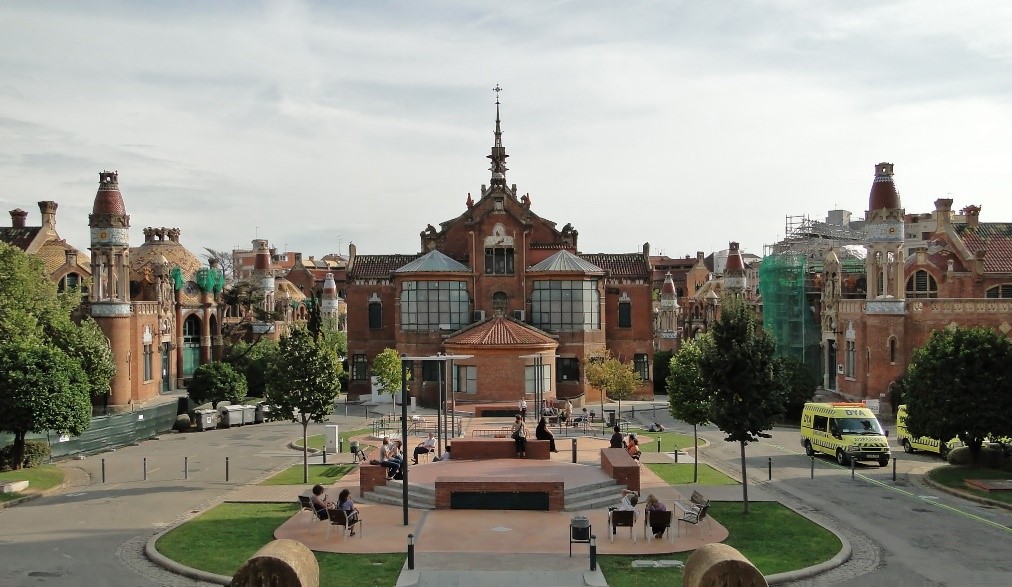500 bone marrow transplants performed in Catalonia each year
The first bone marrow transplant in Spain was performed in Barcelona, by doctors from Sant Pau Hospital. It was on the 22nd of May 1976 and the patient was a 13-year-old girl who suffered from acute leukaemia. Since then, 2,939 operations of this type have been carried out in Catalonia. Director of the Haematology Service at Sant Pau, Jordi Sierra, stated that 500 bone marrow transplants take place in Catalonia each year and that Sant Pau alone performed 130 operations of this kind in 2015, 23 of them on children. Bone marrow transplant survival rate varies from 70% in a young patient who is in an early stage of the disease and receives a donation from a relative, to 30% in the case of a patient over 60 years old and in an advanced stage who has a transplant from an unrelated donor, explained Sierra. However, thanks to new therapies, transplants might not be necessary for cancerous diseases in the future.

Barcelona (CNA).- The Sant Pau Hospital in Barcelona has just celebrated the 40th anniversary of its first bone marrow transplant, which was the first to be performed in Spain. It took place on the 22nd of May in 1976 and 2,939 operations of this type have been carried out in Catalonia since then. According to Director of the Haematology Service at Sant Pau, Jordi Sierra, 500 bone marrow transplants take place in Catalonia each year and in Sant Pau alone 130 operations of this kind were performed in 2015, 23 of them on children. This kind of transplant is especially frequent amongst children and they register the highest survival rate; with the rate being around 70% for a young patient who is in an early stage of the disease and receives a donation from a relative but falling to 30% in the case of a patient over 60 years old and in an advanced stage who has a transplant from an unrelated donor, explained Sierra.
The celebration of the 40th anniversary of the first bone marrow transplant at the Hospital de Sant Pau brought together doctors and specialists with patients and donors. Ismael Lopez is 61 years old and received transplants containing his own cells for nine years. Another patient present at the anniversary was Victor González. Victor was nine years old when he was diagnosed with leukaemia, and he twice received bone marrow from his older sister.
The first patient who received a bone marrow transplant in Spain was a 13-year-old girl that suffered from acute leukaemia. However, a few months after the transplant, the disease came back and the girl did not survive. A paediatric haematologist who participated in the first operation in 1976, Josep Cubells, explained that the first transplant was done ‘by hand’, and that they did not have sterile chambers.
Cubells stated that over the last 40 years, a series of techniques and treatments has been developed that has increased the possibility of tackling diseases associated with bone marrow transplants, such as leukaemia. Jordi Sierra explained that current developments mainly include the use of stem cells from umbilical cord blood, the possibility of transplants from donors with 50% support or the extension of the range of unrelated donors for the patient. According to Sierra, the survival rate has clearly improved and is now twice as high, with an average of 60%. However, the survival rate varies from 70% in a young patient who is in an early stage of the disease and receives a donation from a relative, to 30% in the case of a patient over 60 years old and in an advanced stage who has a transplant from an unrelated donor. Sierra stressed that a transplant is only proposed when there is no ‘alternative cure’ or it is expected that it would improve the patient’s chances of survival by 20%-30%.
With the new therapies, transplants might not be necessary for cancerous diseases in the future. The Director of the paediatric unit of haematopoietic stem cell transplantation at Sant Pau, Isabel Badell, stated that concerning genetic diseases, developments are moving toward a treatment with the affected patient's own cells, which makes transplantation unnecessary in the treatment of some diseases. Badell participated as a medical resident in the first bone marrow transplant and stated that it “is a privilege to have seen the development of all the improvements in bone marrow transplants over the years. Proof of this is that children with leukaemia, who had a 10% chance of survival, now reach cure levels of 80%”.